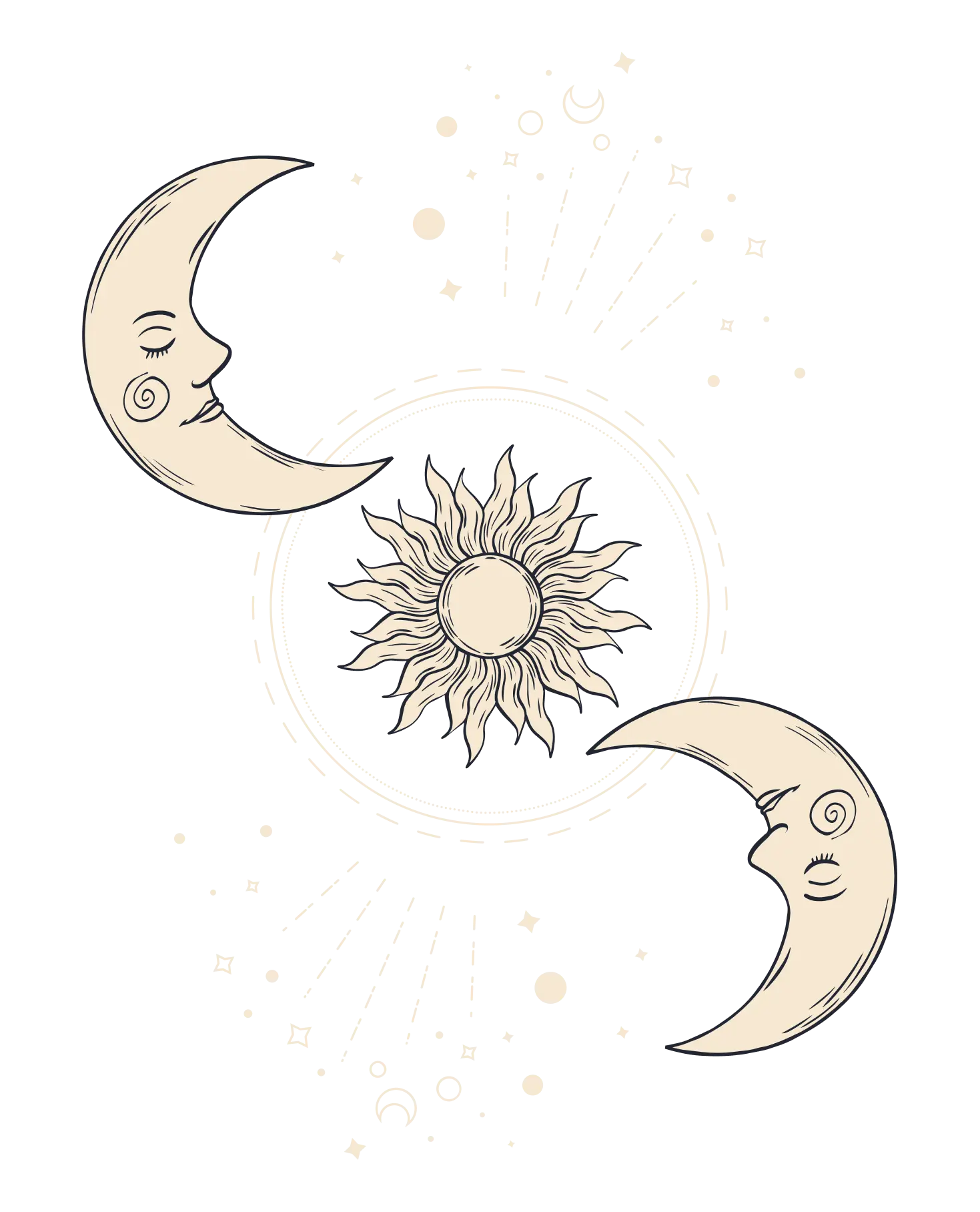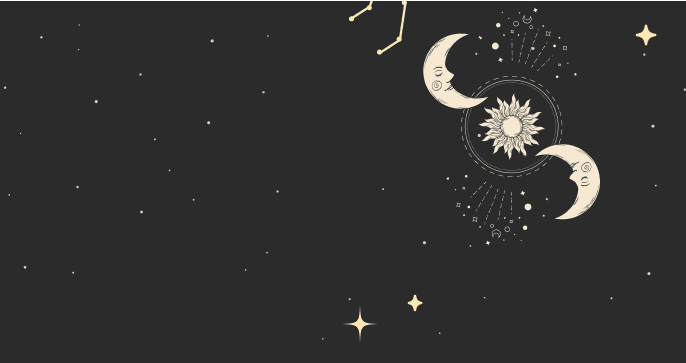Ostara, celebrated around March 20th at the spring equinox, is one of the eight Sabbats on the Wheel of the Year.
For the ancient Celts and other early peoples, this time marked the delicate balance between light and dark—a powerful symbol of rebirth, renewal, and fertility.
✨✍️ This article is part of our new MoonX Creators Program. Want to join and become an author? Learn more at https://moonxcreators.tilda.ws/
☀️ Balance, Renewal, and New Beginnings
For our ancestors, the spring equinox was more than a change of season. It was seen as the moment when the waning darkness and emerging light were in perfect balance. This equilibrium symbolized the earth’s rejuvenation after the long, harsh winter. With the sun gradually returning to strength, ancient communities believed the land was reborn, imbued with life and fertility. It was a time when the cycle of death and rebirth was celebrated, reminding people that even after the most challenging periods, renewal was inevitable.
🌾 Fertility Rites and the Propagation of Life
Ancient rites during the spring equinox often focused on fertility—both for the land and for the people. Rituals were performed to invoke the forces of nature that ensured a bountiful harvest and prosperous offspring. Communities would perform ceremonies meant to bless the soil, the seeds, and even their own bodies. Fertility rites could include offerings, dance, and the recitation of ancient prayers, all aimed at channeling the energy of growth and renewal into every aspect of life.
🥚 Eggs as Symbols of Fertility
Eggs have been revered across many ancient cultures as potent symbols of fertility and the promise of new life. In a shell, an egg holds the mystery of creation—a hidden potential waiting to burst forth into the world. For the Celts, eggs were often decorated and incorporated into rituals as tokens of abundance and the life force that emerges from within. In some traditions, eggs were even rolled down hills to mimic the sun’s energy sparking life in the earth—a vivid reminder of the cyclical nature of existence.
🐇 Hares and Rabbits: Emblems of Fecundity
The hare (and by extension, the rabbit) is another enduring symbol of springtime fertility. Known for its prolific breeding, the hare came to represent not only abundance but also the swift, energetic renewal of life. Some legends link these animals with the goddess Ēostre (or Ostara), a deity whose very name means “the exalted one.” Ēostre was often celebrated in early Germanic and Celtic traditions, and her associations with hares underscored themes of growth and the transformative power of nature. In ancient festivals, images or effigies of hares might be incorporated into rituals or dance, symbolizing the natural bounty and fecundity that the spring equinox heralded.
Myth and Mystery
Although direct accounts of Celtic Ostara celebrations are sparse, the symbolism found in later folklore is rich with meaning. The blending of egg imagery, hare symbolism, and seasonal renewal points to an underlying celebration of life itself—a ritual acknowledgment that nature continuously transforms. Some ancient stories tell of rituals in which eggs were blessed or shared as gifts among families, ensuring that each home would be fertile and prosperous. These practices were deeply embedded in the collective consciousness and later influenced modern spring festivals and Easter traditions.
Ancient Customs:
In Celtic culture, the spring equinox was likely observed with outdoor gatherings, feasts, and rites that honored the land’s transformation. While detailed records are rare, archaeological hints and later folklore suggest that communities might have marked the day with dances, the offering of eggs, and symbolic acts like planting seeds or even releasing live hares as tokens of fertility. Such acts served both a practical and a spiritual purpose: to ensure that the earth would continue to yield its abundance and to reaffirm the community’s connection to the cycles of nature.
Modern Celebrations:
Today, Neo-Pagans, Wiccans, and modern witches celebrate Ostara by drawing on these ancient symbols. Rituals often include:
• Setting Intentions and Planting 🌱: Modern practitioners might engage in ritual planting—whether literally in a garden or metaphorically by writing down goals—thus echoing ancient practices of sowing for a bountiful harvest.
• Egg Decorating and Sharing 🎨: The custom of decorating eggs continues as a joyful, creative expression of fertility and new life. Many groups hold egg hunts, communal art sessions, or share meals featuring seasonal ingredients.
• Outdoor Rituals and Feasts 🔥: Like their ancestors, many modern celebrants gather outdoors to feel the earth’s energy directly, sharing feasts that feature fresh, local produce and seasonal foods, and honoring the balance of light and dark with candlelit ceremonies or bonfires.
• Symbolic Representations 🐇: Many also incorporate images of hares or rabbits in their altars as a nod to ancient lore. These symbols remind practitioners of the life-giving power and rapid renewal inherent in the season.
For many modern practitioners, celebrating Ostara is an opportunity to honor the deep, ancient ties between humanity and the natural world. It is a time to recognize that our cycles of growth and renewal mirror those of the earth, and that by aligning our lives with these rhythms, we tap into a timeless source of inspiration and healing.
For the ancient Celts, the spring equinox was not merely a seasonal marker—it was a sacred moment when the cosmos and the earth were in perfect balance. This equilibrium was central to their understanding of the world. It was a day when:
• ☀️ The Forces of Light and Dark Met: The equal lengths of day and night symbolized harmony and balance. This balance was seen as essential for the regeneration of life.
• 🌾 Fertility and Abundance Were Invoked: Rituals performed at the equinox were designed to invoke the earth’s natural fertility, ensuring the prosperity of crops and the health of the community. Fertility rites, though not always documented in detail, were an integral part of the celebration.
• 🔄 Spiritual Renewal Was Embraced: The equinox served as a reminder that transformation is constant and that every ending gives way to a new beginning. This perspective reinforced the cyclical nature of life—a cornerstone of Celtic spirituality.
For modern witches and Neo-Pagans, Ostara is a time to reconnect with these ancient values. Celebrating the equinox today means honoring our ancestors’ wisdom, embracing change, and affirming our place in the eternal cycle of life. Although our modern rituals might incorporate new symbols or methods (such as digital moon journals or contemporary garden planting), the heart of the celebration remains the same: to recognize the transformative power of nature and to invite growth, healing, and renewal into our lives.
Whether you’re decorating eggs, dancing in a sunlit clearing, or gathering around an altar laden with symbols of rebirth, Ostara calls you to remember that the energy of spring is both ancient and alive in every act of renewal. Let this sacred time guide you as you plant the seeds of your future, balance light and darkness, and celebrate the inexhaustible cycle of life. 🌸🌿✨
Comments


Discover more fascinating insights and stay updated on all lunar events in the MoonX app.
Popular questions
EVERYDAY WELLBEING
Start Your Guided Cosmic
Journey with MoonX
Build out your own personalized spiritual practices with MoonX today
compatibilityhoroscopebirth chartmediate sleephealing soundjournaltarotgratitudereduce stress